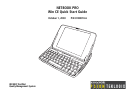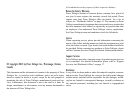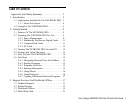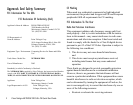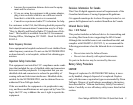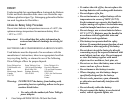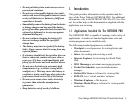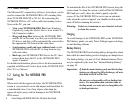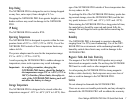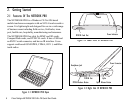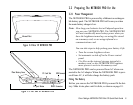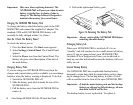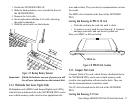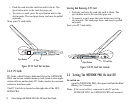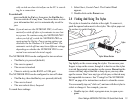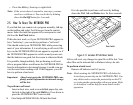2 Psion Teklogix NETBOOK PRO Win CE Quick Start Guide
Approvals And Safety Summary
FCC Information For The USA
FCC Declaration Of Conformity (DoC)
Applicant’s Name & Address: PSION TEKLOGIX INC.
2100 Meadowvale Blvd.
Mississauga, Ontario, Canada L5N 7J9
Tel.: (905) 813-9900
US Representative’s
Name & Address: Psion Teklogix Corp.
1810 Airport Exchange Blvd., Suite 500
Erlanger, Kentucky, 41018, USA
Tel.: (859) 371-6006
Equipment Type / Environment: Computing Devices for Home and Office
Use
Trade Name / Model No.: NETBOOK PRO
Year of Manufacture: 2003
Standard(s) to which Conformity is Declared:
The NETBOOK PRO, supplied by Psion Teklogix, has been tested and found to
comply with FCC PART 15, SUBPART B - UNINTENTIONAL RADIA-
TORS, CLASS B COMPUTING DEVICES FOR HOME & OFFICE USE.
Applicant: Psion Teklogix Inc.
Mississauga, Ontario, Canada
Legal Representative in US: Psion Teklogix Corp.
Erlanger, Kentucky, USA
CE Marking
When used in a residential, commercial or light industrial
environment, this product and its approved UK and European
peripherals fulfil all requirements for CE marking.
FCC Information To The User
Radio And Television Interference
This equipment radiates radio frequency energy and if not
used properly—that is, in strict accordance with the instruc-
tions in this manual—may cause interference to radio com-
munications and television reception. It has been tested and
found to comply with the limits for a Class B digital device
pursuant to part 15 of the FCC Rules. Operation is subject to
the following two conditions:
1. This device may not cause harmful interference,
and
2. This device must accept any interference received,
including interference that may cause undesired
operation.
These limits are designed to provide reasonable protection
against harmful interference in a residential installation.
However, there is no guarantee that interference will not
occur in a particular installation. If this equipment does cause
harmful interference to radio or television reception, which
can be determined by turning the equipment off and on, the
user is encouraged to try to correct the interference by one or
more of the following measures:
• Reorient or relocate the receiving antenna.



